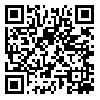شمارۀ جدید فصلنامه (پاییز1404) منتشر شد
Volume 14, Issue 1 (10-2023)
Social Problems of Iran 2023, 14(1): 9-33 |
Back to browse issues page
Download citation:
BibTeX | RIS | EndNote | Medlars | ProCite | Reference Manager | RefWorks
Send citation to:



BibTeX | RIS | EndNote | Medlars | ProCite | Reference Manager | RefWorks
Send citation to:
Afsharkohan J, Balali E, Rahimi S. (2023). Pathology of scientific relations among faculty members of universities of Iran. Social Problems of Iran. 14(1), 9-33. doi:10.61186/jspi.14.1.9
URL: http://jspi.khu.ac.ir/article-1-3622-en.html
URL: http://jspi.khu.ac.ir/article-1-3622-en.html
1- , j.afsharkohan@basu.ac.ir
Abstract: (1728 Views)
Scientific relations play an important role among the scientists. For example, vast volume of information is obtained through meetings and the scientific relationships, however the researches done in this regard shows that the relationship among the professors has been declined and this declination causes the loss of scientific efficiency and lack of productivity. This study is set out to investigate the pathology of scientific interactions among the faculty members of state universities of Ilam. Applying Collins theory, main factors considered in this research includes, interaction rituals, emotional energy and cultural capital. This study is a type of survey and the method is quantitative. The data were gathered through questionnaires distributed among faculty members. After the prediction of the dependent variable variance, using the Cochran formula, the sample volume 170 was calculated. The sampling procedure was proportional classification. The results indicated that among the faculty members of Ilam, the relationship was in a moderate level, emotional energy was high, and symbolic attention space was low.
Keywords: rituals of interaction, research field, attention space, cultural capital, emotional energy
Type of Article: Original Research |
Subject:
Media & Communication
Received: 2023/06/28 | Accepted: 2023/09/28 | Published: 2023/10/9
Received: 2023/06/28 | Accepted: 2023/09/28 | Published: 2023/10/9
References
1. Aufi, A., & Fulton, C. (2014). Use of Social Networking Tools fo Informal Scholarly Communication in Humanities and Social Sciences DisciplinesProcedia. Social and Behavioral Sciences, 147, 436 - 445. [DOI:10.1016/j.sbspro.2014.07.135]
2. Baruch,F. )2013(. The science of science communication. Proceedings of the National Academy of Sciences, 110(3), 14033-14039. [DOI:10.1073/pnas.1213273110]
3. Bautista, C. Et al. (2022). Ten simple rules for improving communication among scientists.PLOS computational biology.
https://doi.org/10.1371/journal.pcbi.1010130 [DOI:10.1371/journal.pcbi.1010130.]
4. Collins, R. (2000). The sociology of philosophies, a global theory of intellectualchange, Cambridge: Harvard University Press.
5. Collins, R. (2004).Interaction ritual chains, Princeton: Princeton University Press. [DOI:10.1515/9781400851744]
6. Hurd,Julie M. (2000). The Transformation of Scientific Communication: A Model for 2020. Journal of the American Society for Information Science, 51(14), 1279-1283.
https://doi.org/10.1002/1097-4571(2000)9999:9999<::AID-ASI1044>3.0.CO;2-1 [DOI:10.1002/1097-4571(2000)9999:99993.0.CO;2-1]
7. Kyvik, S., & Reymert, I. (2017). Research collaboration in groups and networks: differences across academic fields. Scientometrics, 113, 951-967
https://doi.org/10.1007/s11192-017-2497-5 [DOI:10.1007/s11192-017-2497-5.]
8. Latour, B., & Woolgar, S. (1987). Laboratory Life: The Construction of Scientific Facts. Prenceton University Press. [DOI:10.1515/9781400820412]
9. Mapston, L.M., & Kuchel, L.J. (2015). Core Skills for Effective Science Communication: A Teaching Resource for Undergraduate Science Education. International Journal of Science Education, 7(2), 1-21. [DOI:10.1080/21548455.2015.1113573]
10. Matinez,W. (2018). How science and technology developments impact employment and education. Penas, 115(50), 12624-12629. [DOI:10.1073/pnas.1803216115]
11. Odlyzko, Andrew. (2000), the future of scientific communication: AT&T Labs - Research. http://www.dtc.umn.edu/~odlyzko/doc/future.scientific.comm.pdf.
12. Pikas, Ch. (2006). THE IMPAINFORMATION AND COMMUNICATION TECHNOLOGIES ON INFORMAL SCHOLARLY SCIENTIFIC COMMUNICATION: Prepared for LBSC878: Doctoral Seminar in Information Studies.
13. Shoham, S. (2016). Scholarly communication: a study of academic researchers. Journal of Librarianship and Information Science, 30(2), 113-122. [DOI:10.1177/096100069803000203]
14. Trench, B. (2017). Universities, science communication and professionalism,journal of science communication, 16(5), 1-18. [DOI:10.22323/2.16050302]
15. Yuan, S., Oshita, T., AbiGhnnam, N., & Dudo, A.D. (2017), Two-way communication between scientists and the public: a view from science communication trainers in North America. International Journal of Science Education, 7(1), 1-15. [DOI:10.1080/21548455.2017.1350789]
Send email to the article author
| Rights and permissions | |
 |
This work is licensed under a Creative Commons Attribution-NonCommercial 4.0 International License. |








